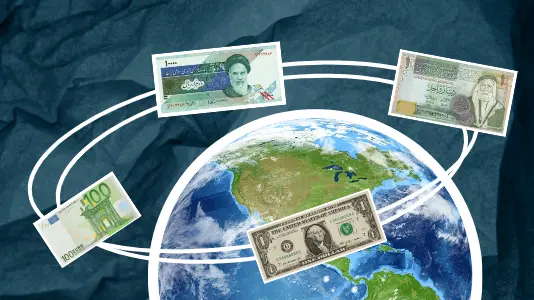When talking about world currencies, the US dollar – the official currency of the United States – often takes center stage.
This is only natural, considering this currency’s prominence in the financial markets and the global economy.
But did you know that the United States dollar is far from being the world’s most expensive currency? It’s not the British pound or the euro, either!
Read on to learn about the world’s most valuable currencies!
What Does “Highest Currency in the World” Mean?
There are 180 legal tenders in circulation today. Like national economies, some currencies are stronger than others.
Several factors contribute to a currency’s rank among the world’s strongest currencies, including:
- A country’s economic strength and stability
- A low inflation rate
- High interest rates
- Low government debt
- Foreign exchange reserves
- Political stability
- Sound monetary policies
- Amount of foreign currency received regularly
A country that meets and exceeds these criteria is well on its way to having the most expensive currency globally.
Some of the countries that meet these criteria (e.g., Japan, the US, and the UK) have currencies that are considered “major currencies” in the forex market.
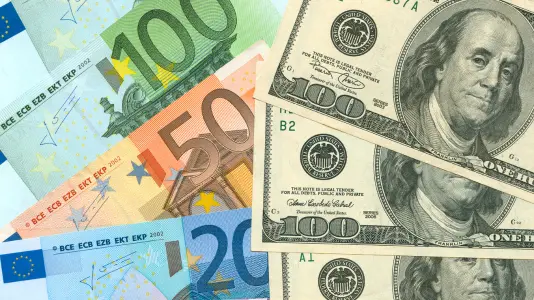
However, a country’s currency can be stronger than major currencies and still not included in the world’s major currency pairs.
This can be due to several reasons, such as:
- Limited international trade of the currency
- Limited currency convertibility
- Regional focus
- Lack of global financial centers
This isn’t to say that these currencies are not as significant as major currencies. It simply means that the currency is not as widely traded as major ones.
Don’t know which currencies are widely traded and profitable in the forex market? Experienced traders certainly do! Join CommuniTrade, connect with thousands of traders worldwide, and learn from their practical trading insights to help you succeed.
Top 10 Most Expensive Currencies in 2024
The US dollar is the most traded currency globally. Over 50% of all traded currency pairs in the forex market include the US dollar. For this reason, we used it as the basis for measuring the most expensive currencies worldwide.
The table below shows the exchange rate of the top ten strongest currencies in the world versus the US dollar.
| Country/Territory | Currency | USD Equivalent |
|---|---|---|
| United States | US dollar (USD) | 1.0 |
| European Union | Euro (EUR) | 1.08 |
| Switzerland | Swiss franc (CHF) | 1.13 |
| Cayman Island | Cayman Island dollar (KYD) | 1.20 |
| Gibraltar | Gibraltar pound (GIP) | 1.27 |
| United Kingdom | British pound (GBP) | 1.27 |
| Jordan | Jordanian dinar (JOD) | 1.41 |
| Oman | Omani rial (OMR) | 2.61 |
| Bahrain | Bahraini dinar (BHD) | 2.66 |
| Kuwait | Kuwaiti dinar (KWD) | 3.26 |
Read on for a detailed breakdown of the strongest currencies worldwide!
10. United States Dollar (USD)
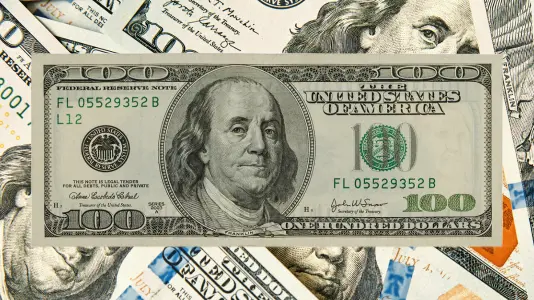
The US dollar is the most liquid – or most traded – currency globally, with an average daily trading volume of USD 2.9 trillion. It is the official currency of the world’s largest economy.
When it comes to currencies, the US dollar is the standard against which all others are measured.
Though not as old as the British pound, the US dollar has been the dominant currency following the Bretton Woods Agreement and even after its abolishment.

Many of the world’s currencies are pegged to the US dollar, and some countries (e.g., El Salvador, The Bahamas, and Timor Leste) have even adopted it as their own national currency.
The United States’ official currency is also the world’s largest reserve currency. This means that it comprises most of the world’s central banks’ foreign currency reserves.
Another factor that helps keep the USD among the top ten strongest currencies is the petrodollar system. Under this system, oil-producing countries agreed to price oil in US dollars. This increased the demand for the currency and made it even more prominent in international trade.
In the global foreign exchange market, the seven major currency pairs are any major currency paired with the US dollar.
While it’s not the world’s highest-valued currency, being the 10th means only nine currencies in the world – out of 180 – are more expensive than the US dollar.
1 USD = 1.00 USD
9. Euro (EUR)
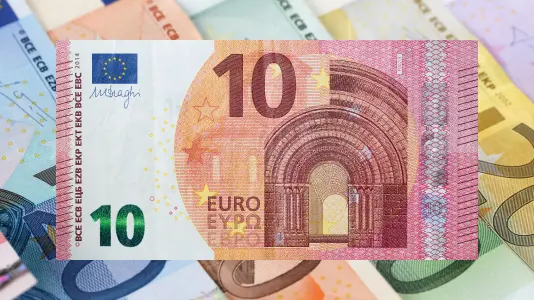
The euro is the official currency of 20 of the 27 European Union (EU) member countries. These 20 countries have replaced their own currency with the euro as the official currency.
They include:
| Austria | Belgium | Croatia | Cyprus |
| Estonia | Finland | France | Germany |
| Greece | Ireland | Italy | Latvia |
| Lithuania | Luxembourg | Malta | The Netherland |
| Portugal | Slovakia | Slovenia | Spain |
The euro is the world’s second-largest reserve currency after the US dollar and the second most traded currency globally. These two factors explain why the euro-dollar currency pair (EUR/USD) is among the most popular major currency pairs in the foreign exchange markets.
The general political stability of the Eurozone (barring Brexit) contributes to the euro’s strength. However, the region’s relatively low interest rates weigh down the regional currency’s value.
The euro is one of the world’s major currencies, along with the Australian dollar, Canadian dollar, Japanese yen, New Zealand dollar, Swiss franc, the US dollar, and the British pound.
1 euro = 1.06 USD
8. Swiss Franc (CHF)
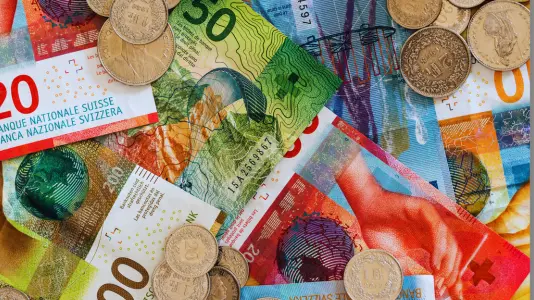
The Swiss franc is the national currency of two countries: Switzerland and Liechtenstein. It is the seventh-most traded currency globally and is widely acknowledged as a stable currency.
In 2011, Switzerland pegged the Swiss franc to the euro at a rate of 1.20 CHF per euro. However, Switzerland’s central bank, the Swiss National Bank, unpegged its currency from the euro in 2015. The Swiss Central Bank cited the Swiss franc as gaining too much strength as its reason.
Owing to Switzerland’s political stability, the Swiss franc is one of the most stable currencies worldwide; investors see it as a safe haven currency.
The country’s economic stability, with its low unemployment and inflation rates, makes it attractive to foreign investors.
1 Swiss franc = 1.10 USD
7. Cayman Islands Dollar (KYD)
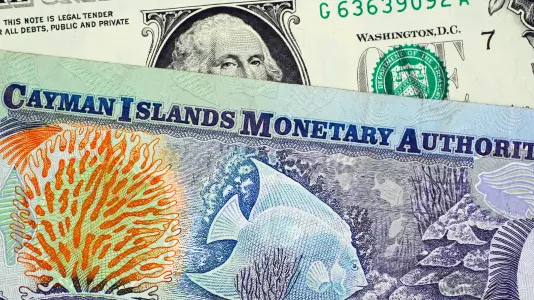
The Cayman Islands is a self-governing British Overseas Territory. It was formerly a dependency of Jamaica until its independence in 1959.
Following its independence from Jamaica, The Cayman Islands adopted the Cayman Islands dollar, or KYD, as its official currency.
The Cayman Islands pegs its currency to the US dollar, helping it benefit from the strength of the US economy.
Pegging the KYD’s value to the US dollar doesn’t mean that the Cayman Islands’ currency is weak on its own. On the contrary, this British Overseas Territory boasts a strong economy with a low debt-to-GDP ratio. This means the Cayman Islands has a strong economy and can reliably repay its debts.
1 Cayman Islands dollar = 1.20 USD
6. British Pound (GBP)
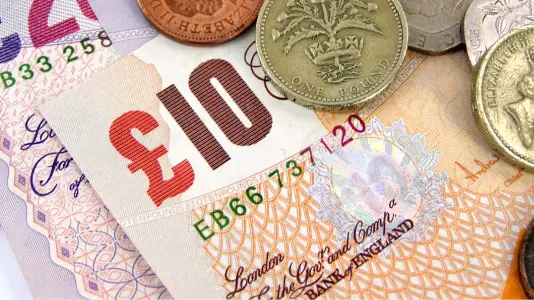
The British pound sterling, or the Great British pound, is believed to be the world’s oldest currency. Some claim its history dates back 1,200 years to 8th-century England.
During this time, 240 sterling (the name of the coins used at the time) weighed approximately one pound, which gave rise to the present-day denomination — pound sterling.
The British pound ranks fourth on the most-traded currency list, and the GBP/USD pair is among the most traded currency pairs in the foreign exchange market.
Even after leaving the European Union, the UK’s currency has retained its strength and is the 6th most valuable currency worldwide. Likewise, the UK’s economy holds its place as the 6th strongest economy globally.
The UK’s strong and diverse economy, relatively stable political landscape, and independent central bank help the country maintain its currency strength.
1 British pound sterling = 1.25 USD
5. Gibraltar Pound (GIP)
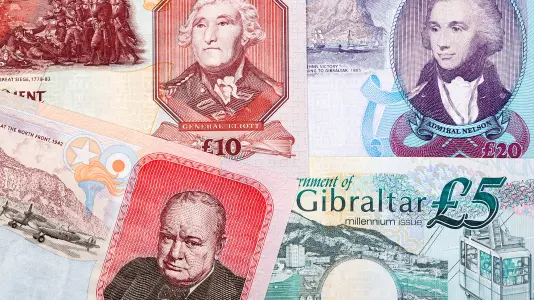
The Gibraltar pound is the official currency of Gibraltar and is pegged to the British pound’s value. The relationship of the Gibraltar pound with the UK’s currency allows it to benefit from the UK’s economic strength.
Located at the southern tip of Spain, Gibraltar is technically a British territory and internationally recognized as a British Overseas Territory.
Despite its small size, it is a major financial center with a bustling tourism industry that helps support the strength of its currency.
The territory is self-governing in all aspects except territorial defense. It is governed by a Governor who serves as the official representative of the sitting British monarch.
1 Gibraltar pound sterling = 1.25 USD
4. Jordanian Dinar (JOD)
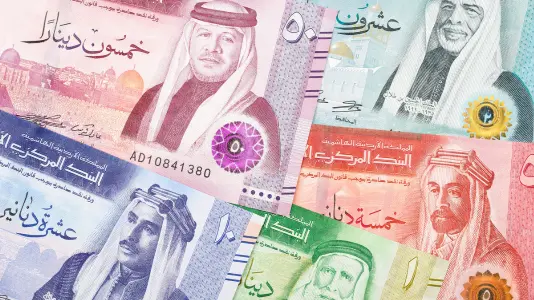
The Jordanian dinar is the official currency of Jordan, a land-locked country in the Middle East.
Unlike its Middle Eastern neighbors, Jordan is not entirely reliant on oil and gas exports to support its economy. Instead, the country has a diverse economy, including finance, trade, and services.
The Jordanian dinar derives its strength from being pegged to the US dollar. This fixed exchange rate keeps the country’s currency value stable.
1 Jordanian dinar = 1.41 USD
3. Omani Rial (OMR)
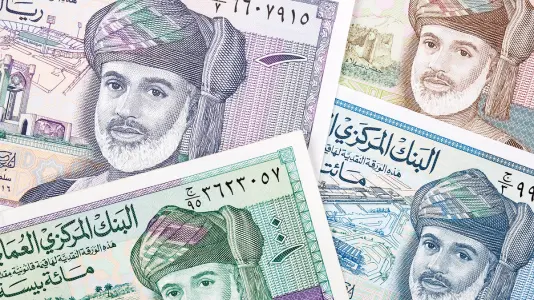
The Omani rial is the official currency of Oman and the third strongest currency globally.
Like the Jordanian currency, it is pegged to the US dollar. However, the Omani rial’s value does not solely rely on its relationship with the US currency.
Oman is situated on the Arabian Peninsula’s southeastern coast. Excluding members of the Organization of the Petroleum Exporting Countries (OPEC), it is the largest oil producer in the Middle East.
The country’s low inflation rate also helps maintain the strength of the Omani rial.
1 Omani rial = 2.60 USD
2. Bahraini Dinar (BHD)
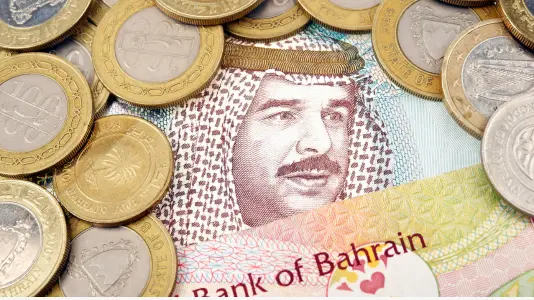
The Bahraini dinar is the second strongest currency worldwide. It is the official currency of the Kingdom of Bahrain.
Bahrain is an island nation situated northeast of Saudi Arabia. It is bordered on all sides by the Persian Gulf and connected to the Middle Eastern mainland by the King Fahd Causeway.
Although oil is still a major contributor to its GDP, Bahrain is becoming less oil-reliant and starting to diversify its economy. In 2023, oil exports’ contribution to Bahrain’s GDP fell to 18%, a dramatic decrease from 42% in 2000.
Like the other currencies in this list, the Bahraini dinar’s strength is helped by its country’s low inflation rate.
1 Bahraini dinar = 2.65 USD
1. Kuwaiti Dinar (KWD)
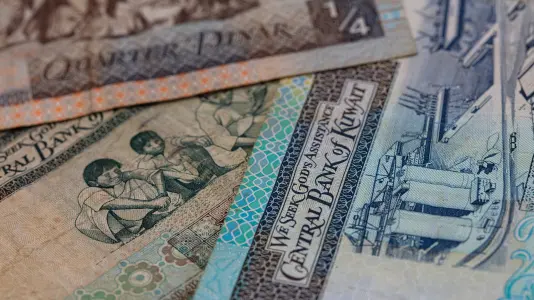
The Kuwaiti dinar is the most valuable currency in the world. It is the official currency of the State of Kuwait, a Middle Eastern country situated at the northern tip of the Persian Gulf and bordered by Iraq and Saudi Arabia.
Introduced in 1960, the Kuwaiti dinar’s value was initially equal to one British pound. Since its introduction, the Kuwaiti dinar’s strength has continually climbed until it gained primacy among the world’s strongest currencies in 2007.
Many factors helped the Kuwaiti dinar rise to the top of the world’s strongest currencies list. These reasons include:
- Kuwait’s oil exports. Kuwait is among the world’s largest oil exporters, with an average annual export of 1.6 million barrels per day of crude petroleum alone.
- Political stability. Kuwait’s stable political climate helps it attract foreign investors.
- Currency scarcity. The Central Bank of Kuwait keeps a tight lid on the world’s supply of Kuwaiti dinar. The limited amount of Kuwaiti dinar in circulation helps keep the currency’s value high.
- Fixed exchange rate. The Kuwaiti dinar was initially pegged to the UK pound sterling before its value was re-pegged to an undisclosed basket of currencies.
Trade Smart with CommuniTrade
Adept traders possess a wealth of working knowledge. When it comes to the highest-ranking currencies, they know when and how to make the most of these currencies’ strengths to secure maximum profit.
Trading is more than just looking at numbers. It involves consideration of economic factors that could affect the currencies’ ranks in the market.
Hone your knowledge and skills in trading the most expensive currencies with guidance from our expert traders at CommuniTrade.
A Closer Look at the World’s Most Expensive Official Currency
What makes the Kuwaiti dinar such a valuable currency? In addition to the answers already provided earlier, the strength of Kuwait’s national currency lies in its high demand.
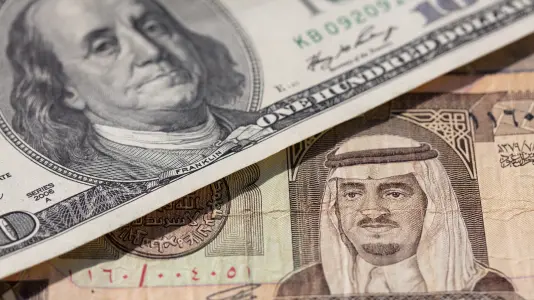
Look at the Japanese yen. One US dollar is worth 130.54 yen, and one Kuwaiti dinar has an exchange rate of 500.65 yen. Yet the Japanese yen has earned a place among the world’s eight major currencies and is the third most-traded currency in all forex trades.
A combination of economic factors contributes to the Japanese currency’s eminence in the forex market despite its drastically lower nominal value than the Kuwaiti dinar.
- Japan has the second-largest economy worldwide and is a highly industrialized and technologically advanced country. This gives the yen substantial clout in international trade and finance.
- The Japanese financial market is among the largest and most liquid globally. The Japanese yen’s sheer daily trading volume catapults it among the most economically important currencies globally.
- Like the Swiss franc, the Japanese yen is a safe-haven currency. It is the second-most stable currency globally after the CHF. In times of economic turmoil, investors flock towards safe-haven assets, further cementing the yen’s global economic significance.
Going back to the Kuwaiti dinar, it just doesn’t have these benefits yet.
What Makes a Foreign Currency Strong?
Because currencies are always traded in pairs, currency strength is always relative.
Relative value notwithstanding, a currency’s strength derives from the economic health and importance of the issuing country.
National fiscal policies likewise affect the value of a country’s currency. Countries with sound monetary policies and stable economies attract more foreign investors, driving their currencies’ value.
Learn more about currencies and the foreign exchange market from our experts at CommuniTrade. Join millions of subscribers in the discussion and discover which currency pairs are best to trade to achieve maximum gains.

